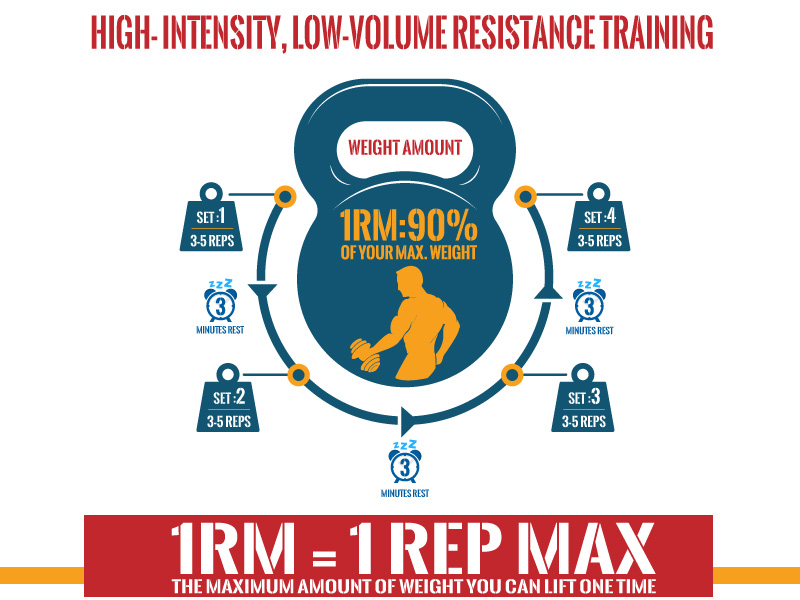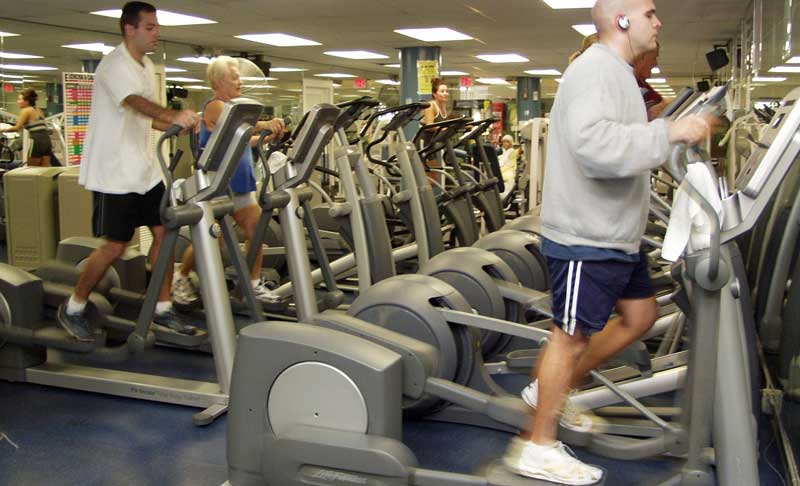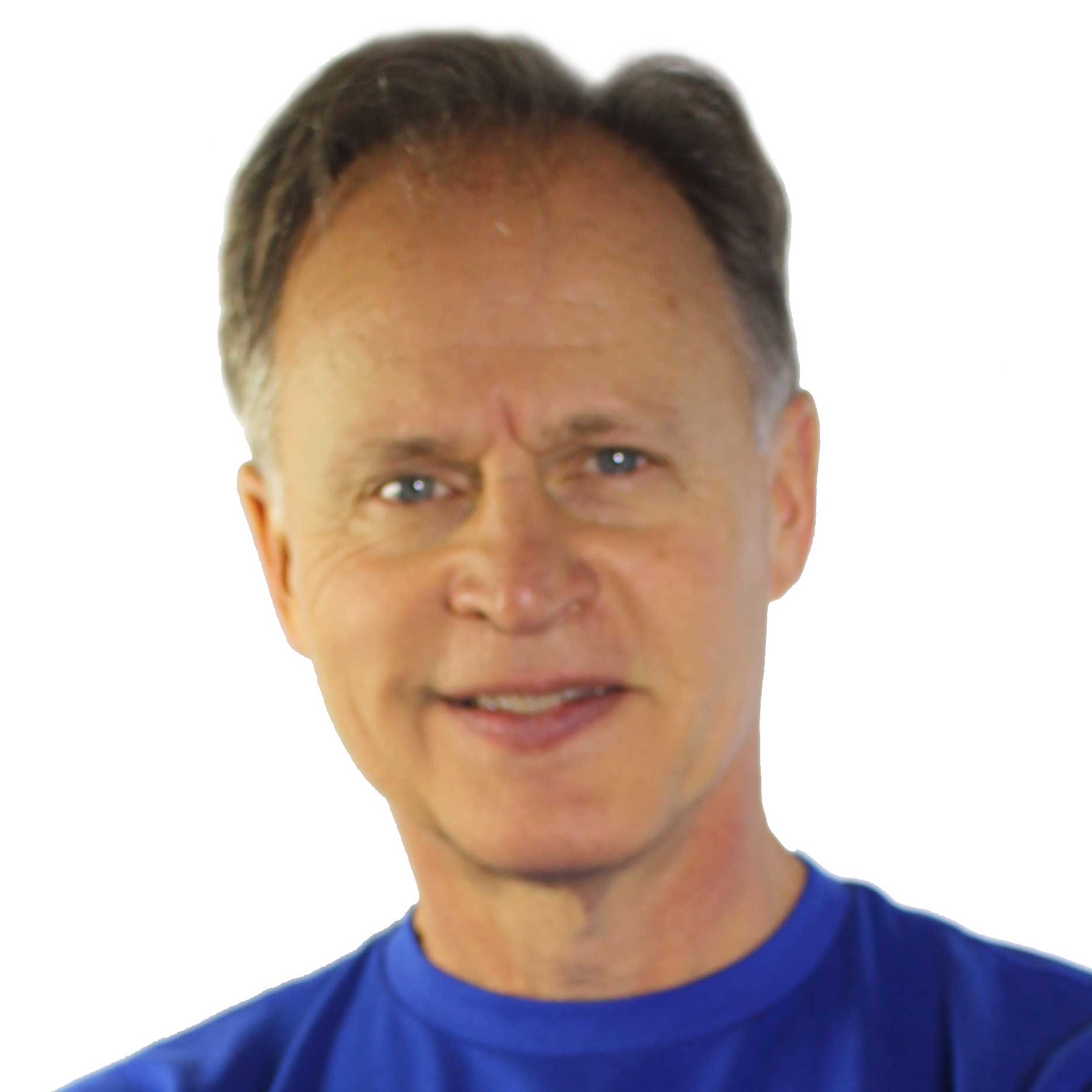If you've been looking for a good reason to exercise we'll start with one of the most important. At least from our point of view. Studies have shown that exercise can increase testosterone and that can lead to a better sex life. Of course there are other really good reasons to exercise, like avoiding death. Because when you're dead you can't have sex.
We'll talk about two kinds of training in this article, resistance training and cardio training. If you want to live a comfortable life in your old age, you need both.
Warm-up
Before you do your first lift, it is imperative that you warm up your muscles first. Research studies have proved that isometric preconditioning helps prevent injury (1). Isometric preconditioning is the fancy way of saying warm-up. After your reach your upper forties it becomes even more important to warm up since your muscles start to lose elasticity.
Notice that we are using the term warm-up instead of stretching. It has been shown that stretching doesn't really protect your muscles from injury. Stretching lengthens the muscles but it doesn't simulate the movement you will experience during the workout. That's why we save stretching for after the workout.
So for the best warm-up choose exercises that mimic as close as possible the activity and movements you'll be doing during your workout. If you're doing a full-body workout like we recommend then you'll need to do a full-body warm-up. Just use very light weight on your first pass through your exercises. You could do a single set of each exercise for 10 or 12 reps.
Before you warm up with weights you first want to get the blood flowing through your muscles. Activities like a tread mill, cycling, or jump rope raise your body temperature and warm your muscles. A maximum of three minutes of cardio should be sufficient.
The time of the warm-up depends on the intensity of your planned workout, but it generally it is in the ten minute range.
Resistance Training
As you age there will be a natural decline in muscle mass unless you do something about it. There's even an ominous sounding name for it. It's called sarcopenia, which means loss of skeletal muscle mass.
Skeletal muscles are the most common type of muscle in the body and are attached to the bones. That makes them sort of important if you want to move since they are responsible for the movement of body parts in relation to each other.
People who are physically inactive can lose up to 10% of their muscle mass each decade after age 30. This is why our motto is "Stay in Motion" here at Verve2o. If you don't keep your muscles moving and strong, it will be harder to do so later. You've likely heard the saying before, "use it or lose it!"
And if muscle loss isn't bad enough, the war against belly fat gets harder and harder as you age. Of course they go hand in hand. Since muscle helps burn fat, strengthening your muscles can help remove belly fat.
These are the reasons why resistance training is arguably the most important type of exercise for aging men and you should try to do some sort of resistance training 2-3 times a week. We provide some recommendations below, but even if all you can do is some training using a resistance band kit, do it. Resistance bands can provide an excellent workout.
If better sex, health, and less belly fat aren't enough benefit, as an added benefit, exercise can also improve memory. A study by The Georgia Institute of Technology found that exercise also improves episodic memory, which is the memory of times, places, associated emotions, and other contextual who, what, when, where, and why knowledge. (2)
What Type of Resistance Training Should You Do?
The answer to that question lies in a 2015 eight-week study. A joint study by the Institute of Exercise Physiology and Wellness at the University of Central Florida and Health & Exercise Science at The College of New Jersey compared the results of high-volume versus high-intensity resistance training on stimulating changes in muscle size and strength in resistance-trained men. (3)
In the study their were two-methods of exercise:
- High-volume: 4 sets of 10–12 repetitions with approximately 70% of one repetition maximum [1RM] and 1-minute rest intervals
- High-intensity: 4 sets of 3–5 repetitions with approximately 90% of 1RM and a 3-minute rest interval
If you're not a body builder you likely don't know what 1RM means. According to Wikipedia, "One-repetition maximum (one rep maximum or 1RM) in weight training is the maximum amount of weight that a person can possibly lift for one repetition." So if you're doing a bench press and the most you can press is 100 pounds, that is your 1RM. So in the High-intensity method, which requires 90% of your 1RM, that would calculate to 90 pounds.
So which one of these above methods was the clear winner in the study? It's very obvious by the following chart that the High-intensity method wins. The chart shows that those study participants who used the High-intensity method could lift more weight by the end of the eight-week study, and they also had more muscle growth as shown by ultrasound and other test methods.

The results of this study concur with similar studies in 2002 (4), 2009 (5) and 2014 (6) which all show that: high-intensity, low-volume programs utilizing long rest intervals primarily target muscle strength increases with a similar magnitude of muscle hypertrophy. Muscle hypertrophy is a term for the growth and increase of the size of muscle cells.
The graphic below illustrates what your workouts will look like with the High-intensity, Low-volume workout. Here is what the graphic illustrates. The kettle bell weight represents how much weight you will lift per repetition. The 1RM means you will lift 90% of the maximum amount you could possibly lift if you only did one repetition. Then the four weights around it mean you will take that 1RM weight amount and lift it 3-5 times and then rest for 3 minutes in between sets. You will repeat this process four times, or four sets. You will do this for every exercise recommended, such as bench presses, deadlifts, dumbell flys, lat pulldowns, leg presses, etc.
WARNING: We do not recommend that you try to find your maximum weight through experimentation. That is a recipe for getting hurt and jeopardizing your workout program.
Instead we recommend using a 1RM Predictor Calculator, which allows you to select a lighter weight and then do multiple repetitions until you feel you can't do any more reps. You simply plug in the weight amount used and the number of reps you did to calculate your 1RM.
Click here for an example of a calculator: 1RM Predictor Calculator
Cardio Training
While we can't stress how important resistance training is for an aging man, there are some pretty serious consequences of not getting cardio exercise. The risk of heart disease accelerates after the age of 50 with claims that men over 50 have a 50% risk of developing it as he gets older. In fact, it's one of the biggest causes of death in the U.S.
There are lots of good ways to get in your cardio workouts. Here's just a few: treadmill, running, cycling, swimming, stair climbing, rowing. You can pick and just do one for 15-20 minutes three times a week. Doing cardio longer than 20 minutes is not recommended and can even be harmful so keep it short and intense. Try to get your heart rate up near your recommended maximum heart rate, which is is about 220 beats per minute minus your age.
An exercise routine called Low-Impact, High Intensity Interval Training (HIIT) is one of the best ways to do cardio for aging bodies. With HIIT you'll do very short bursts of 20 to 90 second high intensity of activities like treadmill sprints, stairmaster, jumping rope, and cycle sprints. With HIIT you push your body to the maximum, let it rest, and then do it again.

Stretching
During a workout your muscles are constantly in a contracted state. People used to belief that post workout stretching meant less muscular pain later but research has shown this part isn't true. However as an older gentlemen stretching is extremely important since stretching increases range and flexibility. If you don't want to shuffle along like an old man, you'll stretch.
Stretching can also improve your posture. If your muscles are tight they can pull body parts in wrong directions, such as tight chest muscles pulling your shoulders forward. Then as a result of poor posture you can end up with back or neck pain.
Below is a good video for a 5-minute full body stretch.
Workout Guide
Make sure whatever exercise you do does not cause pain, unless that pain is muscle that is sore from a previous workout. You don't want to work through pain in your knees, back, or joints. This could cause further injury/damage.
Instead of using exercise machines or barbells, we recommend using dumbbells or kettlebells for men over 40. These have a safer range of motion than a barbell since a barbell locks you into a fixed range of motion. Dumbbells also encourage joint stabilizer muscles to work since the motion is more fluid and natural.
You can also substitute resistance bands for dumbbells if you don't have access to them or you are travelling. These are very portable and you can do most of the exercises with them.
You can use the High-intensity, Low-volume workout chart above to perform the following exercises which gives you a good full body workout. These are a good starting point to an exercise program but feel free to add other exercises to these if you want.
1. Dumbell Bench Press
Have a slight decline in the bench so your head is down lower than your legs (about a 10% decline). Push weights up until the weights touch each other.
2. The Deadlift
With older age the spinal discs usually become more compressed so an alteration to the deadlifts you did in younger years is needed. When you do a Deadlift you want to start with the dumbells right up against your shins with your weight on your heels so you are leaning back slightly, then pull them up along your shins keeping them close to your body until you are standing. Lower the dumbells back to the floor and this is one repetition. For this exercise you can use a barbell as well.
3. The Dumbbell Row
Lay face forward on a bench that is set to a 45 degree angle with the dumbbells in hand. Pull the dumbells up, pause, then let them back down. This is one repetition.
4. Seated Overhead Press
Sit on a bench or chair and grab two dumbbells and bring them to shoulder level one at a time. Don't keep your arms in a perfect goal post pattern, but rather bring your arms a little forward so you don't put unnecessary stress on your shoulder joints. Keep the weights slightly above the shoulder line and lift them up, pause for a second, and then bring them down and pause again. This is one repetition. Keep your core really tight to protect your back.
5. Dumbbell Squat
Bring two dumbbells up to your shoulder level in front of your body. Sit back like you're squatting above a chair and then come back up again. Make sure your weight is in your heels and not your toes. This is one repetition. Keep moving without pausing until you complete all repetitions.
For the Dumbbell Squat you can do a higher number of repetitions than specified in the High-intensity, Low-volume recommendation here if you don't have very heavy weights and since your legs contain the largest muscles in the body.
Additional Exercises
The older you get it's also important to work in some extra core exercises, which can help with back pain. You should strive for 3-sets of crunches, 3-times per week to strengthen your stomach muscles. Also do planks for as long as you can hold it since this will not only strengthen your abs but also your back muscles as well. In case you're not familiar with a plank it is just lying on your stomach and then raising your self using your forearms and toes while keeping your back straight (no arch in it. Try to repeat the plank 2-3 times.

Diet
While your diet isn't exercise, it does support muscle growth and it is the foundation of weight loss. You aren't going to lose weight and keep it off without changing your diet.
For instance if you spend one hour walking on a treadmill you will burn approximately 500 calories. A single Big Mac at McDonald's is 540 calories, throw in fries and a soda and you'll have to spend several hours on the treadmill to burn off those calories. Few people have time for that so if you want to lose weight there is no faster way of doing that than consuming fewer calories.
In fact, you wouldn't even need to exercise at all to lose weight. But you'll be able to live a happier and more fit life with exercise and that should be your goal.
Resources:
1. Warm-up and stretching in the prevention of muscular injury. https://www.ncbi.nlm.nih.gov/pubmed/18027995
2. "A single bout of resistance exercise can enhance episodic memory performance" https://doi.org/10.1016/j.actpsy.2014.06.011
3. "The effect of training volume and intensity on improvements in muscular strength and size in resistance-trained men" https://www.ncbi.nlm.nih.gov/pmc/articles/PMC4562558/
4. "The effects of accentuated eccentric loading on strength, muscle hypertrophy, and neural adaptations in trained individuals." https://www.ncbi.nlm.nih.gov/pubmed/11834103/
5. "American College of Sports Medicine position stand. Progression models in resistance training for healthy adults." https://www.ncbi.nlm.nih.gov/pubmed/19204579/
6. "Effects of different volume-equated resistance training loading strategies on muscular adaptations in well-trained men." https://www.ncbi.nlm.nih.gov/pubmed/24714538/

Tim Bruxvoort is founder of FitManPlan.com whose mission it is to help men over 40 live the best version of their lives through fitness, nutrition, pain management, and improved life skills. He is a long-time, aging entrepreneur and health enthusiast who has experienced many of the challenges currently being faced by other men over 40 and his goal is to deliver solutions to help them achieve their fitness and health goals.
